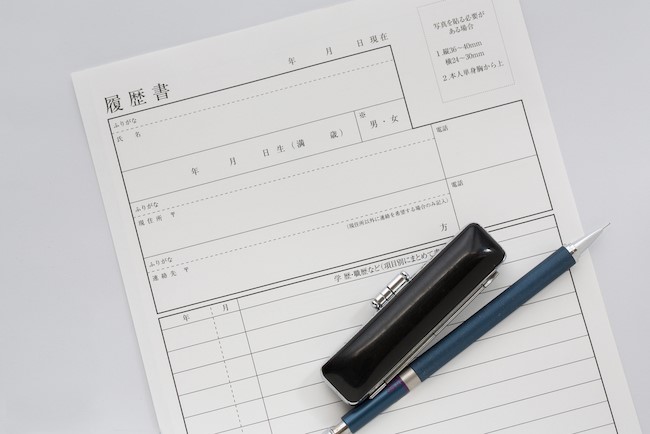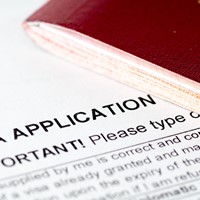The Ins and Outs of Japanese Resumes as a Foreigner

This page contains affiliate links.
When searching for a job in Japan, it is necessary to follow the standardized resume formula and style in order to be taken seriously by employers. Here we will introduce the standard resume type and some tips on making your submission stand out.
What You Need for Writing a Japanese Resume

The most important thing you need for writing a Japanese resume is a standard Japanese resume template. Unlike Western resumes, where there is some room for layout design, Japanese resumes follow a strict format, like filling out a form rather than creating an original document.
Japanese resume templates can be purchased in convenience stores, online or downloaded online for free. It is also very common for these resume templates to be filled out by hand.
Writing your resume by hand can be seen as showing dedication and commitment to a new job with the neatness of your handwriting being an indication of character. While some companies stick closely to this tradition, it has become more accepted over recent years to have a typed resume.
If you choose to handwrite your resume, make sure to only use black ink, write as neatly as possible, and if you make any mistakes, start over. White-out or correction tape is not allowed to be used on resumes. If you choose to type your resume, use one of the standard Japanese fonts (usually Mincho or Gothic) consistently with no mixing of fonts.
Japanese resumes also require a passport-sized photo to be attached in the upper-right corner of the front sheet. This photo is of great importance and will be considered carefully by potential employers. The photo should be similar to a passport photo or ID photo, in that it has a plain background, is taken from the shoulders up, and is usually done in a photo studio or photo booth.
Your photo should put forward your best professional appearance, meaning you should wear a business suit, have neat and professional hair, and minimal makeup and jewelry.
How to Write a Japanese Resume
It is important to include the following:
- Basic personal information
- Education and work history
- Qualifications
- Skills
- Self-promotion
There are distinct sections that need to be filled out on a Japanese resume. These largely line up with Western-style resumes, however, there are differences to be aware of.
Basic Personal Information
The first section is personal information. This is where you will give the company your basic information about yourself. While Western resumes have a tendency to not include too much information here, such as gender and age, Japanese resumes require it, so you will need to enter your:
- name
- nationality
- age
- gender
- contact details
as well as the date of submission. It is important to remember this is not the date of writing the resume, but the date you will submit it to the company.
Education and Work History
This section can be seen as one large table that you will need to break up into your education and work history.
Starting with education, the first line should be written as 学歴 for “educational background.” Then you can list your education starting from high school and moving forward to your most recent educational experience. You should include:
- date of enrollment
- date of graduation
- department
- your major
If you were educated outside of Japan, it is also advisable to add the country name in brackets.
In the same table, add the line 職歴 for “work history.” Starting from oldest to the most recent, add your positions with the company name, department and position, and dates. You do not need to add details of what you did in this position or how it could help in the job you are applying for.
Qualifications
This is an area for you to add any licenses, certificates, or additional qualifications you have. It can be something as simple as a driver's license up to and including industry-specific qualifications.
Skills & Self-promotion
After qualifications is an area for special skills and a personal statement. Here you can talk about any skills you possess that may help you in the position. You can also make a statement to sell yourself to the company. This can be seen as similar to a shortened version of a cover letter in Western resumes.
Practical Information
Finally, you will need to include some miscellaneous details, such as commute time. As it is standard for the company to pay transportation expenses, it can be useful for them to see your estimated commute in advance.
You will also need to declare any dependents, spouse, and your spouse’s working situation, as well as any specific requests you may have regarding location or salary. This allows the company to understand the insurance situation if they hire you as well as if your requests fit their requirements.
A Japanese resume provides much of the same information as a Western resume, but it is necessary in Japanese business culture to provide it in the standardized formula outlined above, with additions when required.
Other Advice on Making a Japanese Resume

Submitting a resume is the first step toward potentially getting hired at a new Japanese company. However if your resume doesn’t impress the people hiring, you won’t get to the interview stage where your personality can truly shine and you can explain your experience and skills in more detail. Therefore, it is important that your resume really stands out and makes an employer want to meet you in person.
Some things you can do to help with this include making good use of the Skills & Self-promotion section in the resume. This is the only place that is more freehand, allowing you to demonstrate why you would make a good candidate for the company. It is important to use this section to its full potential.
It is likely your writing of the resume will also be scrutinized for mistakes, whether in handwriting or typing. It is necessary to proofread your resume to make sure there are no incorrect characters, grammatical mistakes, or formality slip-ups.
Overall, your resume should represent you and the benefits you would provide as an employee in the position you are applying for.
Navigating Japan’s Business Culture
We hope this guide has helped to simplify the complexities of writing your first Japanese resume. If you plan to work in Japan, we have a variety of useful guides on Japanese etiquette that are worth reading. From a beginner’s guide to business etiquette, to information on business gift giving, business attire, and business communication, there is much to understand and practice so that you can attain the vital skills that many international businesspeople overlook in Japan.
You may be also interested in reading:
・Business Card Etiquette in Japan
・Japanese Job Titles in English
















